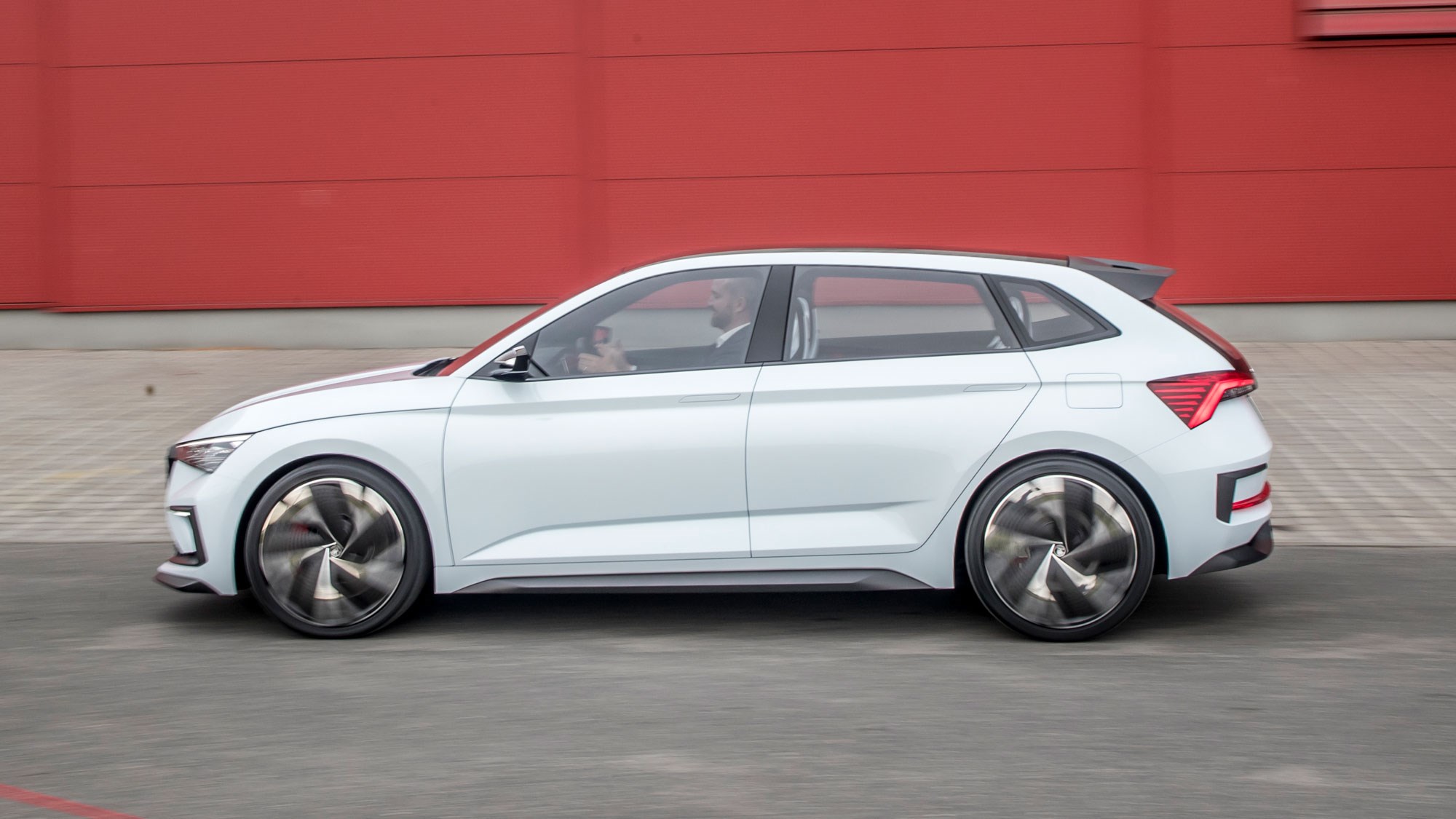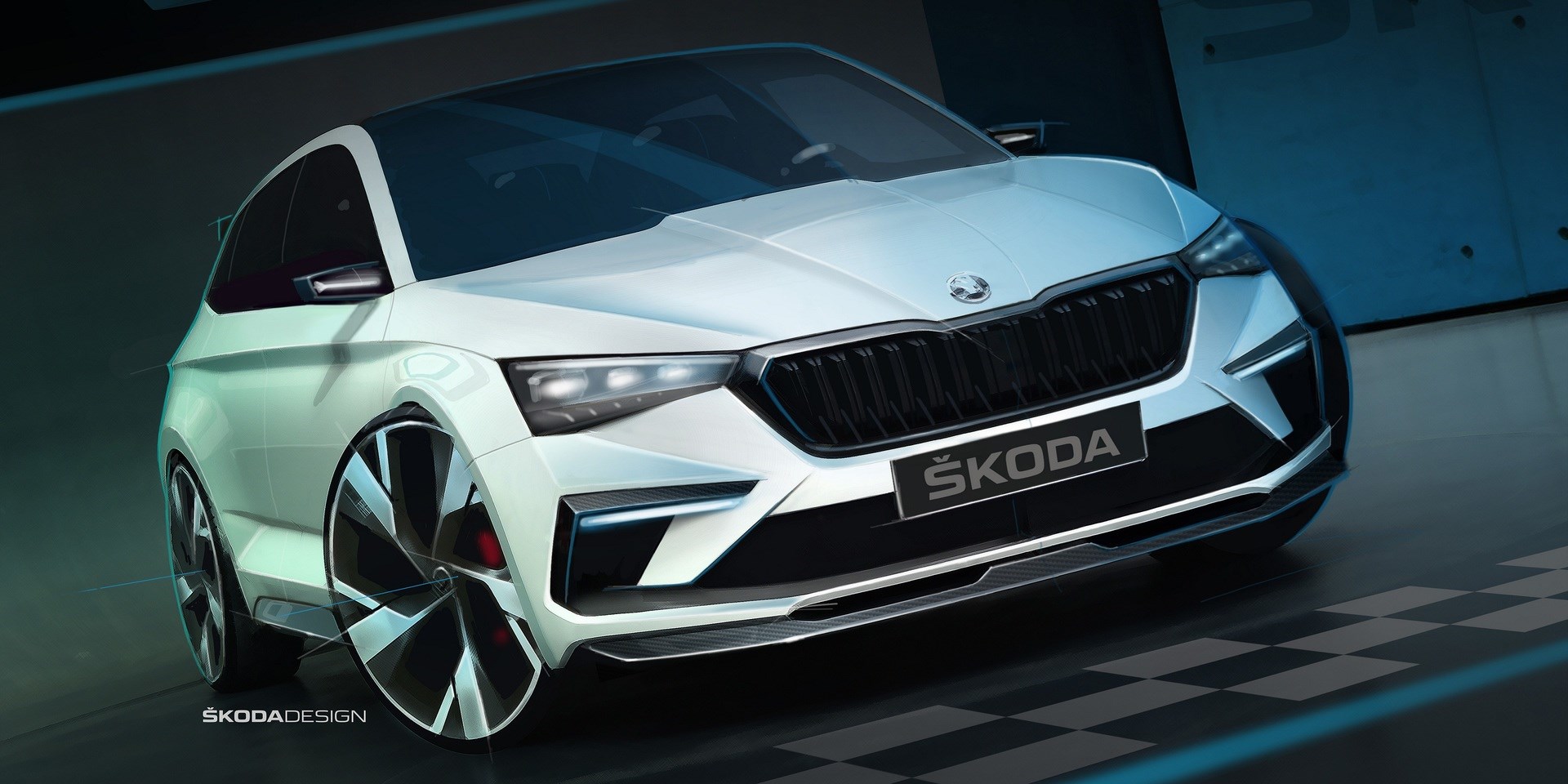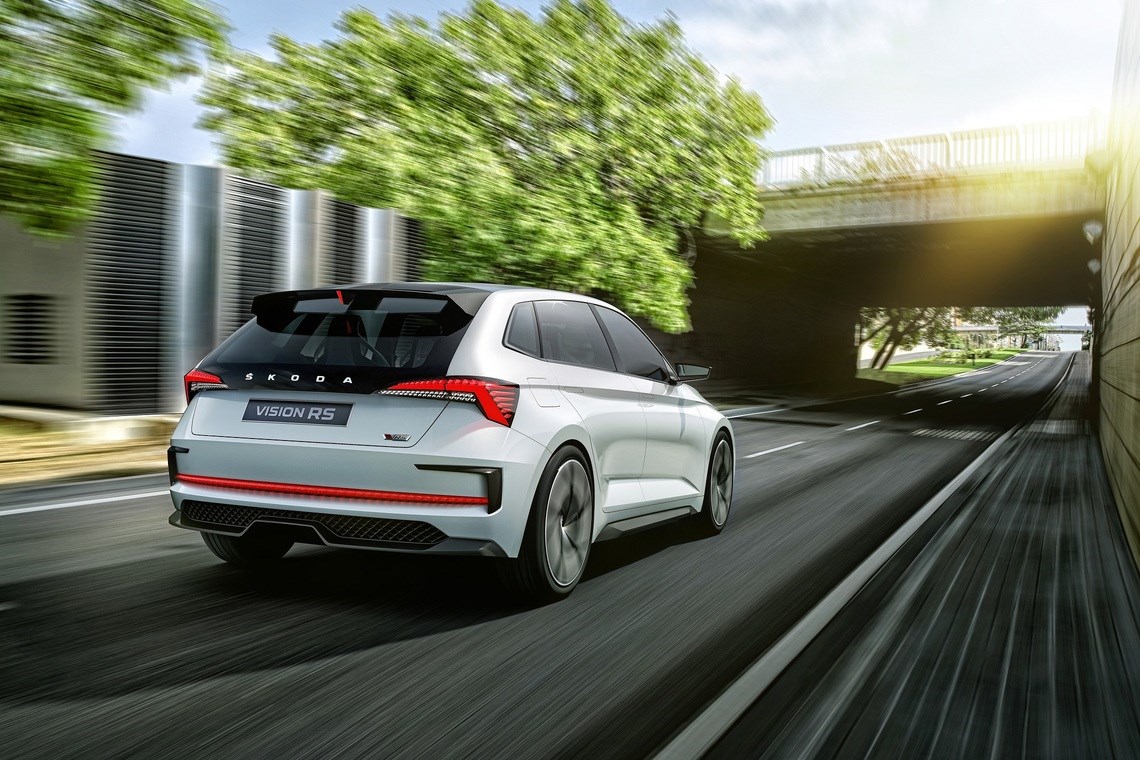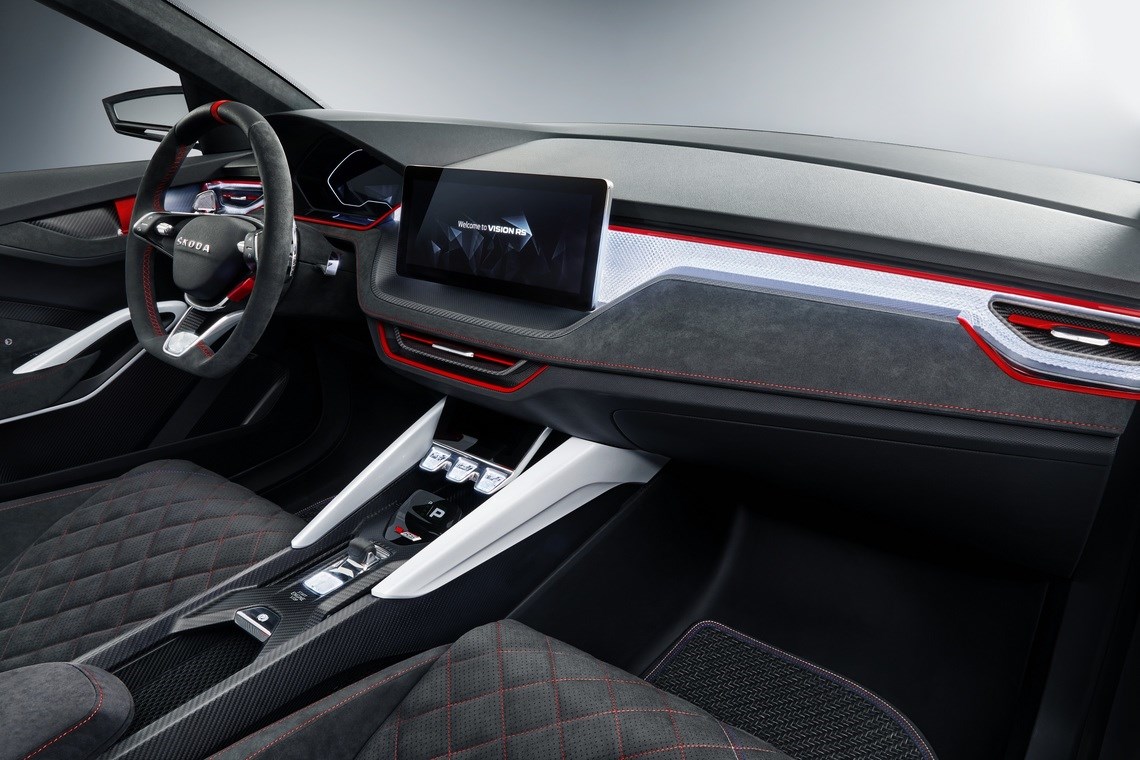► We drive the Vision RS
► First shown in Paris
► Uses new plug-in drivetrain
Unveiled at the 2018 Paris motor show, the Vision RS Concept is a glimpse into the future of performance Skodas. It’s been built with remarkable speed, the designers starting with a blank piece of paper in April 2018 and showing the finished article just five months later.
It previewed a number of things – chief among them a new five-door bodystyle we’re expecting to come to market in the shape of the new Scala; a Ford Focus rival set to replace the forgettable Rapid and sit below the next Octavia.

But more interestingly this Concept also ushers in a new plug-in hybrid driveline that’ll join the VW Group range proper, quite likely on the Superb set to be facelifted during 2019.
Tell me about the Vision RS styling…
While you can ignore some of the more outlandish design aspects – such as the illuminated handmade crystal grille and badge that we’re told won’t make production any time soon, the vertical lines will feature on forthcoming vRS models.
 There’s also highly useful aero tech employed to strike a good balance between aerodynamic efficiency and drag. The best example of this is the wheels, which feature carbonfibre caps that we’re told improve the drag coefficient by eight points, which is rather a lot. These are likely to come to market as an option on some Skodas as the appetite for environmentally friendly motoring intensifies industry-wide. Eco’s cool, nowadays.
There’s also highly useful aero tech employed to strike a good balance between aerodynamic efficiency and drag. The best example of this is the wheels, which feature carbonfibre caps that we’re told improve the drag coefficient by eight points, which is rather a lot. These are likely to come to market as an option on some Skodas as the appetite for environmentally friendly motoring intensifies industry-wide. Eco’s cool, nowadays.
The full-length glass roof blends nicely with the function rear spoiler – also carbonfibre – and the rear profile features a fighterjet-style vertical brakelight below the wing and a pair of brake lights joined by design to a horizontal car-wide lightbar like 911 to create opposing Cs.
But apart from the styling, we shouldn’t look past what this car represents under the skin. Let’s learn more about that…
What’s under the bonnet of the Skoda Vision RS Concept?
It’s a 1.5-litre TSI turbo petrol motor with 148bhp, assisted by an electric motor producing the equivalent of 100bhp – or 75kW in new money.
Combined, peak system output is an interesting 242bhp, for a 0-62mph dash in 7.1 seconds. But being a plug-in, it does all that while emitting a claimed 33g/km of CO2. Its lithium-ion battery has a capacity of 13kWh and can be charged in as little as 2.5 hours by the quickest chargepoints. You’re also able to use home charging, while extra power comes via regenerative braking.

Peak EV range of 43 miles makes this one seriously usable Skoda, and while figures for the Concept may not make it to production, the Superb facelift’s numbers have started filtering through and they’re remarkably similar.
What’s it like to drive?
It’s difficult to tell what it’ll be like on the road, but our extremely short test drive gleaned a number of things. First, we were only allowed to drive on electric power, so there’s no indication of how seamless or otherwise the transition between electric and fossil fuel is.However, we can tell you that the throttle response felt well-measured, where some electric drivelines can feel overenthusiastic on take-off from a standstill. There’s noticeable elasticity in its linear delivery, which helps it feel more like a ‘normal’ drive.
Presumably this will be dialled up or down given the application, but it feels very much road-ready in this spec.The ride is also nearly silent, but then we noticed double-glazing on the frameless windows which often has a big effect on cabin insulation.The steering felt heavily weighted but there was a fraction more communication through the ‘wheel than we’ve come to expect from Skodas of late, however this could be down to the fact it’s been hand-finished, with high-quality Alcantara on the steering wheel always a plus point for those who love driving.
We noticed a flat cornering character at our 20mph top speed, but we’d expect that from most cars really…It’s impossible to comment on the ride given our warehouse test track, but those seats are predictably great, with good support and comfortable bolstering during our few laps.As a footnote to the driving impressions, the interior door handles have a lovely operation. They’re red seatbelt fabric and require the hooking around of a finger to pull, with a heavily damped operation. It has the effect of solidity, in contrast with the one-off nature of this concept
What’s it like inside?
Being a concept vehicle, it won’t surprise you to find a number of innovative cabin features. A space-aged design for the central console is built entirely from carbonfibre and features the shift-by-wire controls for the DSG gearbox. In fact, much of the interior finishing is via the black wonder-weave.

There are fabric loops for door handles, aping racing cars of yore, while the seat covers are apparently woven from millennial-spec vegan Alcantara.
You’ve got some ‘simply clever’ in there too in the same of rubber bands for the storage compartments – this is still a Skoda, after all…
How big is the Skoda Vision RS Concept?
It’s 4356 millimetres long and 1810 millimetres wide without its door mirrors, with a height of 1431mm and a wheelbase of 2650 millimetres.
That makes it lower than the likes of a Focus or Golf, but roughly comparable in most other respects.
Its boot in a nice square space back there with the battery sitting under its floor.
When can I buy one?
At time of publication, Skoda remains tight-lipped on whether this model will go into production. The Scala, which we believe uses the same body style, isn’t an obvious case for the next vRS Skoda anyway given it succeeded the lacklustre Rapid.
What’s more likely is that we’ll see this PHEV tech in forthcoming models as Skoda tries to lower its fleet-wide emissions and fuel economy. The Superb’s a great candidate, given we already know that’ll feature a plug-in hybrid when it’s facelifted during the first half of 2019…